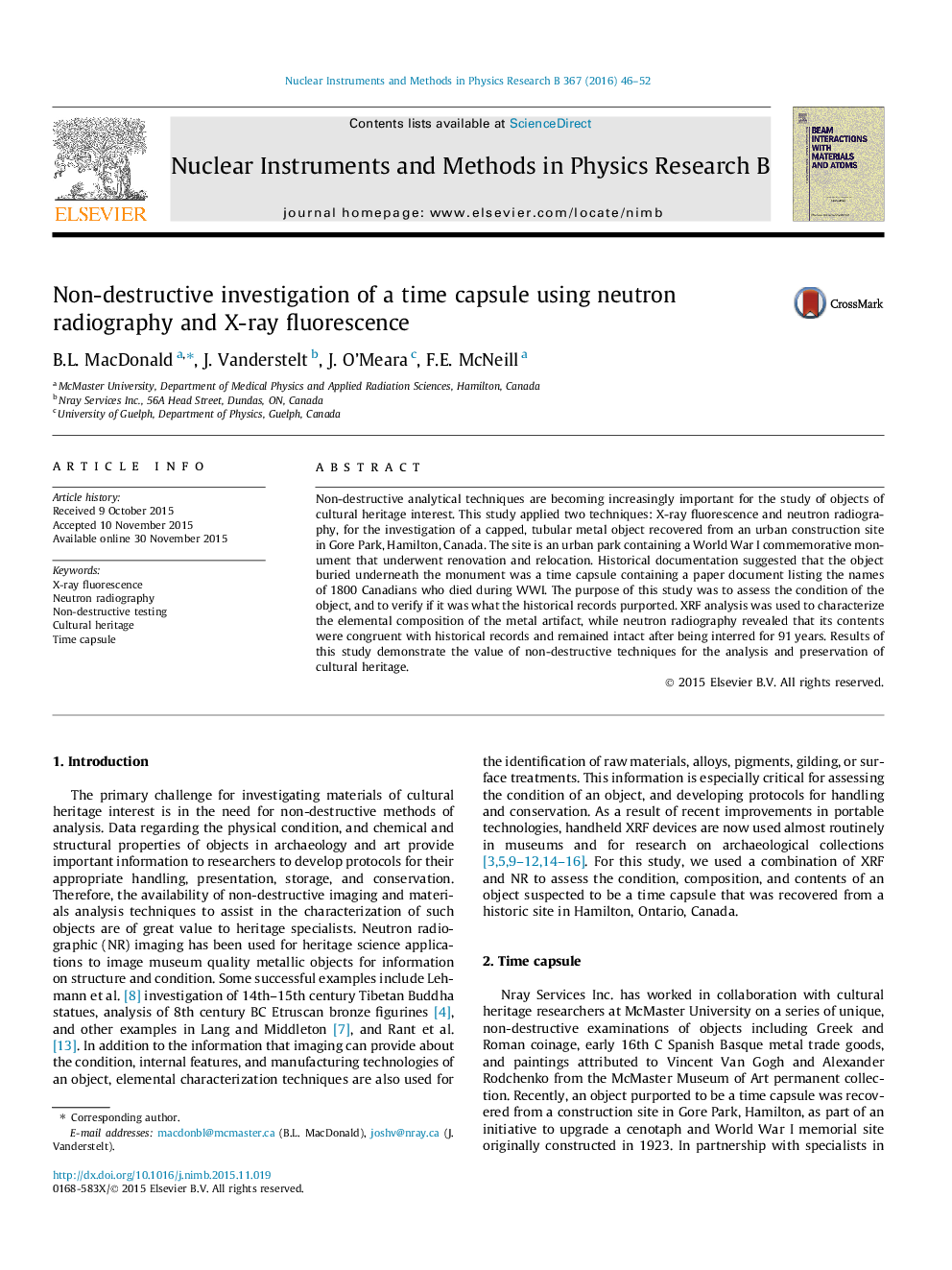| Article ID | Journal | Published Year | Pages | File Type |
|---|---|---|---|---|
| 1682051 | Nuclear Instruments and Methods in Physics Research Section B: Beam Interactions with Materials and Atoms | 2016 | 7 Pages |
Abstract
Non-destructive analytical techniques are becoming increasingly important for the study of objects of cultural heritage interest. This study applied two techniques: X-ray fluorescence and neutron radiography, for the investigation of a capped, tubular metal object recovered from an urban construction site in Gore Park, Hamilton, Canada. The site is an urban park containing a World War I commemorative monument that underwent renovation and relocation. Historical documentation suggested that the object buried underneath the monument was a time capsule containing a paper document listing the names of 1800 Canadians who died during WWI. The purpose of this study was to assess the condition of the object, and to verify if it was what the historical records purported. XRF analysis was used to characterize the elemental composition of the metal artifact, while neutron radiography revealed that its contents were congruent with historical records and remained intact after being interred for 91Â years. Results of this study demonstrate the value of non-destructive techniques for the analysis and preservation of cultural heritage.
Related Topics
Physical Sciences and Engineering
Materials Science
Surfaces, Coatings and Films
Authors
B.L. MacDonald, J. Vanderstelt, J. O'Meara, F.E. McNeill,
